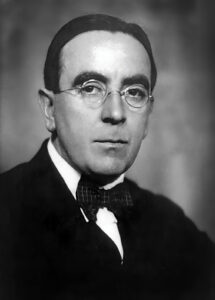John Ireland
 John Ireland was born in Bowdon, near Altrincham, Cheshire, into a family of English and Scottish descent and some cultural distinction. His father, Alexander Ireland, a publisher and newspaper proprietor, was aged 69 at John’s birth. John was the youngest of the five children from Alexander’s second marriage (his first wife had died). His mother, Annie Elizabeth Nicholson Ireland, was a biographer and 30 years younger than Alexander. She died in October 1893, when John was 14, and Alexander died the following year, when John was 15. John Ireland was described as “a self-critical, introspective man, haunted by memories of a sad childhood”.
John Ireland was born in Bowdon, near Altrincham, Cheshire, into a family of English and Scottish descent and some cultural distinction. His father, Alexander Ireland, a publisher and newspaper proprietor, was aged 69 at John’s birth. John was the youngest of the five children from Alexander’s second marriage (his first wife had died). His mother, Annie Elizabeth Nicholson Ireland, was a biographer and 30 years younger than Alexander. She died in October 1893, when John was 14, and Alexander died the following year, when John was 15. John Ireland was described as “a self-critical, introspective man, haunted by memories of a sad childhood”.
Ireland entered the Royal College of Music in 1893, studying piano with Frederic Cliffe, and organ, his second study, under Walter Parratt. From 1897 he studied composition under Charles Villiers Stanford. In 1896 Ireland was appointed sub-organist at Holy Trinity, Sloane Street, London SW1, and later, from 1904 until 1926, was organist and choirmaster at St Luke’s Church, Chelsea.
Ireland began to make his name in the early 1900s as a composer of songs and chamber music. His Violin Sonata No. 1 of 1909 won first prize in an international competition organized by the well-known patron of chamber music W. W. Cobbett. Even more successful was his Violin Sonata No. 2: completed in January 1917, he submitted this to a competition organized to assist musicians in wartime. The jury included the violinist Albert Sammons and the pianist William Murdoch, who together gave the work its first performance at Aeolian Hall in New Bond Street on 6 March that year. As Ireland recalled, “It was probably the first and only occasion when a British composer was lifted from relative obscurity in a single night by a work cast in a chamber-music medium.” The work was enthusiastically reviewed, and the publisher Winthrop Rogers offered immediate publication (the first edition was sold out even before it had been processed by the printers). A subsequent performance of the Violin Sonata by Ireland and the violinist Désiré Defauw drew a packed audience to the Wigmore Hall in London.
Ireland frequently visited the Channel Islands and was inspired by the landscape and the ambience. In 1912 he composed the piano piece The Island Spell (the first of the three pieces in his set Decorations) while staying in Jersey, and his set of three pieces for piano Sarnia: An Island Sequence was written while living in Guernsey in 1939 to 1940. He returned from Guernsey to Britain in 1940 just before the German invasion of the Channel Islands during World War II.
From 1923 he taught at the Royal College of Music. His pupils there included Richard Arnell, Ernest John Moeran, Benjamin Britten, composer Alan Bush, Geoffrey Bush (no relation to Alan), who subsequently edited or arranged many of Ireland’s works for publication, Anthony Bernard and Percy Turnbull (who became a lifelong friend).
John Ireland was a lifelong bachelor, except for a brief interlude when, in quick succession, he married, separated, and divorced. On 17 December 1926, aged 47, he married a 17-year pupil, Dorothy Phillips. This marriage was dissolved on 18 September 1928. He took a similar interest in another young student, Helen Perkin (1909–1996), a pianist and composer, to whom he dedicated both the Piano Concerto in E-flat major and the Legend for piano and orchestra (which began life as a second concerto). She gave the premiere performance of both works, but any thoughts he had for a deeper relationship with her came to nothing when she married George Mountford Adie, a disciple of George Gurdjieff, and she later moved with Adie to Australia. Subsequently, Ireland withdrew the dedications. In 1947 Ireland acquired a personal assistant and companion, Mrs. Norah Kirkby, who remained with him till his death.
Ireland retired in 1953, settling in the hamlet of Rock in Sussex, where he lived in a converted windmill, Rock Mill, Washington, for the rest of his life. It was there he met the young pianist Alan Rowlands who would be Ireland’s choice to record his complete piano music.
He died of heart failure aged 82 at Rock Mill and is buried at St. Mary the Virgin in Shipley, near his home. His epitaph reads “Many waters cannot quench love” and “One of God’s noblest works lies here.”
